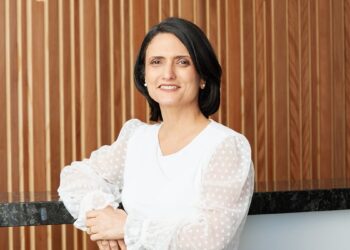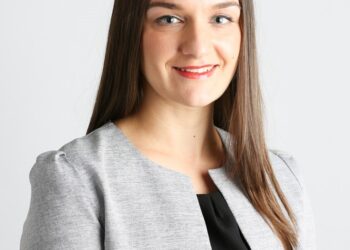In the recent federal budget, the government has announced SMSFs with certain complying income stream products will be given a two-year period to commute and transfer the capital supporting their income stream (including any reserves) back into a superannuation account in the accumulation phase.
While the SMSF Association had recently clarified how the measures will apply to these restrictive pensions, Heffron managing director Meg Heffron said that the main concern now is the intention to impose tax on the “reserves” associated with these pensions. She noted it will be crucial that the government needs to get it right before it begins its implementation.
“I want the change to be fair to all taxpayers (both those of us who are funding social security and superannuation concessions and the beneficiaries of this amnesty) and simple to implement with no ‘gotcha moments’,” Ms Heffron said in a recent blog.
“I also want it to achieve what I think is probably the government’s goal — allow some of its citizens who made very long-term superannuation, tax and social security decisions 15 or 20 or even 25 years ago when the rules were very different to simplify their affairs.”
Deeper issues surrounding pension reserves
It’s important to note that reserves are only a problem for complying lifetime and life expectancy pensions, not market-linked pensions. This is because market-linked pensions don’t require reserves, they are just like account-based pensions in this regard, according to Ms Heffron.
For those pensions that do have reserves, the budget announcements provided that the amnesty would allow recipients of these legacy pensions to fully commute their pensions and transfer the capital, including any reserves, to an accumulation account, an account-based pension (assuming they have enough room within their transfer balance cap to do so) or out of super entirely.
The government’s legislative papers state:
Any commuted reserves will not be counted towards an individual’s concessional contribution cap and will not trigger excess contributions. Instead, they will be taxed as an assessable contribution of the fund (with a 15 per cent tax rate), recognising the prior concessional tax treatment received when the reserve was accumulated and held to pay a pension.
“I think it is probably a reasonable assumption that the ‘reserve’ amount being referred to here is — at most — the amount held by the fund over and above the actuary’s ‘best estimate’ of the value of the pension,” Ms Heffron said.
“In other words, if the member — let’s call him John — has a lifetime pension which an actuary has valued at $1 million but the fund actually holds $1.5 million to support it, the ‘reserves’ would be $500,000.
“Taxing the reserves as outlined above would cost John $75,000 (15 per cent x $500,000). The fact sheet suggests this tax is necessary to reflect past years of concessional tax treatment. But is it?
“That might be true if the ‘reserves’ have come about from extra investment earnings that were exempt from tax while the pension was running. But actually, that’s not how it works.”
In an example, Ms Heffron said to consider that when John’s pension started, the actuary said it was worth around $1.3 million and that John put exactly that amount aside to provide his pension.
Over time, his pension has been indexed which makes the value of his remaining pension payments go up, but at the same time, he’s getting older which makes the value of his remaining pension payments go down and there are fewer of them left to be paid.
“The net impact in John’s case is that the value of his pension is now only $1 million. But great investment returns have meant that his account has actually grown from $1.3 million to $1.5 million instead of falling to $1 million in line with the value of his pension,” Ms Heffron noted.
Ms Heffron said this disconnect between the value of the fund’s assets and the value of the pension is a permanent feature of these types of pensions, as it will be hard for actuaries to predict in absolute certainty from the outset when John will die and how much his fund will earn from its investments.
Furthermore, under that scenario, it may also be reasonable to tax John’s extra $500,000 — if all of that bonus money has come from investment returns that weren’t being taxed in the fund while John’s pension account grew, Ms Heffron noted the process wouldn’t work the way it is intended.
“Firstly, when John started his pension, he wouldn’t have set aside exactly $1.3 million to finance it. His actuary will have advised him that there are other solvency tests he needs to meet when he has one of these pensions and so he should put aside more money. In particular, an actuary is required to certify every year whether or not the fund has enough in his pension account to meet the ‘high degree of probability’ test,” she said.
“This test is only met if the actuary can say there is a ‘70 per cent chance’ that the pension can be covered by the available assets. As you can imagine, this requires much more money to be set aside at the outset than if John was only worried about having enough for the actuary’s ‘best estimate’ of the value of the pension (which is generally more like a ‘50/50 chance’).
“In other words, the government itself has forced people like John to set aside more money in these pensions. John’s pension account probably started at a level far higher than $1.3 million or, let’s say, $1.5 million.”
As a result, some of the “reserves” he has now actually come from his own capital to begin with, according to Ms Heffron. This means that capital has either already been taxed (i.e. it will have come from taxable super contributions or earnings while he was in accumulation phase that were also taxed) or has come from sources that are explicitly not taxed (such as non-concessional contributions).
This also doesn’t take into account if John’s investments have performed well and some of the “reserves” have probably come from strong investment returns.
“It would appear that the government feels these have already escaped income tax because they were earned in a pension account, and normally pension account earnings are exempt from tax,” Ms Heffron said.
“Well, not quite. A very confusing feature of these pensions is that most actuaries calculate the tax-exempt proportion of the fund’s investment returns using only the ‘best estimate’ amount.
“If I was John’s actuary, for example, and the only money in the SMSF was the $1.5 million supporting his lifetime pension, I would certify that roughly 67 per cent ($1 million ÷ $1.5 million) of this year’s investment earnings should be exempt from tax and his fund should pay the normal 15 per cent tax on the remaining 33 per cent of his fund’s earnings.
“He will have been doing that (albeit with different percentages) since the pension started. Unlike someone with an account-based or market-linked pension, John’s fund has probably never enjoyed a 100 per cent tax exemption on its investment income.
“So, even if a lot of John’s $500,000 in reserves comes from great investment returns, I’ll bet his fund has already paid tax on that, too.
“Perhaps the government’s worry is that recipients of these things have secured great social security benefits on the promise of locking up their super in this way, and now we’re giving them a free pass to get out of the pension? I think that would be a bit overzealous. We’ve had these people’s super locked up for at least 15 years and often a lot longer. I think they have served their time — taxing their savings now seems almost vindictive.”



If you go back to the era when these (now legacy) pension were commenced they were either for RBL compression or Social Security asset test exemption.
RBL was the system used to limit the amount of concessional tax treatment for super savings and worked by capping the amount of super that could be taken as a lump sum to around $550k. If you had more than that in super, you could double your RBL if you agreed to hand over the capital in return for an income stream.
There was also lots of fun and games with ‘transitional RBLs’ which meant that the standard RBL, in some cases, was able to be increased.
So the ‘legacy pensions’ in focus today were about concessional tax treatment for many people. SMSFs could start them until someone worked out, probably not a good idea in the long run.
One on our books that we recently looked at has ‘at least a 200% solvency ration’ so I suspect that if the legislation does include a carve out for the notional pension capital, there will still be lots of tax paid by some.
For my reckoning, where the TBC is accommodating, commuting the life-time or life expectancy to a market linked is a safer positioning for this potential new law. If the measure comes through as announced, the market linked pension could then be as flexible as is allowed for super.
Only ‘downside’ (of this 2-step approach) is the new market linked pension is assessed for TBC by reference to the market value of the capital, so you have to carefully work through the TBC space.
Well said Meg. I agree with you 100%. The government simply does not understand the details and complexity involved.